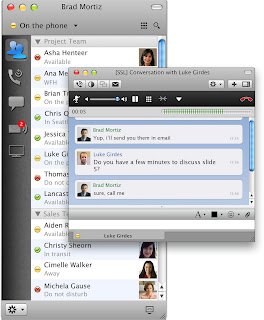The return of football means different things to different people. For some, they strap on their shoulder pads, place a helmet on their head, and don their jersey before heading to the gridiron. For others, they load up a bowl with corn chips, turn on their laptop and television, and put on a jersey before sitting on a couch and wondering if their kicker is going to receive 7.1 points instead of his projected 6.9 points so they can beat the guy who sits in the cube across from him at work.
Yes, the arrival of autumn heralds the return of the world’s greatest fake sport – Fantasy Football . During this season, over 19 million people will “play” this “sport.” And, yes, I am one of those people who will manage their team, while not registering the irony of putting on athletic clothing so I can more effectively sit on my backside and stare at a various glowing rectangles all Sunday afternoon.
As I have found with other avenues of entertainment, I see how Fantasy Football provides us lessons regarding information technology solutions. In this case, I would like to point out some lessons that Fantasy Football can teach us about your Data Center.
Disaster Recovery/Have a back up plan
My number one draft pick this season was Jamaal Charles of the Kansas City Chiefs. Charles was ranked as a top five running back, and projected to have a great season … until I drafted him. (Yes, I take credit for his injury). After his unfortunate collision with the Detroit Lions mascot, Charles received a torn ACL, and his season was ended.
With Charles’ injury, my season could easily end in disaster. However, I was fortunate enough to plan ahead by drafting other Running Backs in case of injury, including the Buffalo Bills’ RB Fred Jackson. By having a back up plan, I still have a chance to contend for a pretend trophy.
With your data center, you too must have a disaster recovery plan. Unlike Fantasy Football, your data center actually means something in real life. In business, it is paramount for leaders to find ways to mitigate the risks to their businesses, protecting their employees, customers and investments. Extended down time or lost data equals lost productivity and lost profits.
In Fantasy Football, it is crucial to have a back up plan. Just like in disaster recovery, it is not a matter of if, but of when you will need to use it.
Value of planning ahead
When managing your Fantasy Football team, you have to factor in that your players will experience bye weeks. Every NFL team is assigned an off, or bye, week when they do not play. Accordingly, you must account for the weeks in which your players take off. You might have the best team in your league; however, if you have not planned ahead for when key positions are empty, you can put your season in jeopardy.
With your data center, it is not enough to focus on right now. You need to plan ahead to scale and grow your data center for future needs. At TBL, our data center engineers can assist you by planning for future growth, and testing to see that your current infrastructure is optimized.
In both Fantasy Football and Data Center, if you fail to plan, you plan to fail.
The power of defense
While it is not as exciting as drafting the best QB, or picking up the unknown Running Back who becomes a dominant player, picking a good Defense is key to your Fantasy Football success. In my first week matchup, my imaginary team squeaked out a 3.08 point victory. I need every point that I could muster that week. Fortunately for me, I had chosen San Francisco 49er’s Defense, which generated the highest points of Week 1. Without a strong defense, I would have lost.
Even if your data center is not large, defense is crucial for your success. During a recent interview with Work It Richmond, Bryan Miller of Syrinx Technologies, who partners with TBL Networks on system security, said that smaller organizations often think “that the bad guys don’t want the resources they own. They feel because they are small that whatever they own isn’t worth the trouble” and that hackers often go after “low-hanging fruit. If you present yourself an easy target, the bad guys will take advantage of it.” A strong defense is key to success in both Fantasy Football and Data Center.
While managing your Data Center might not involve keeping track of which Cincinnati Bengals are currently in jail, you can still find lessons from Fantasy Football to ensure victory in your systems management.



